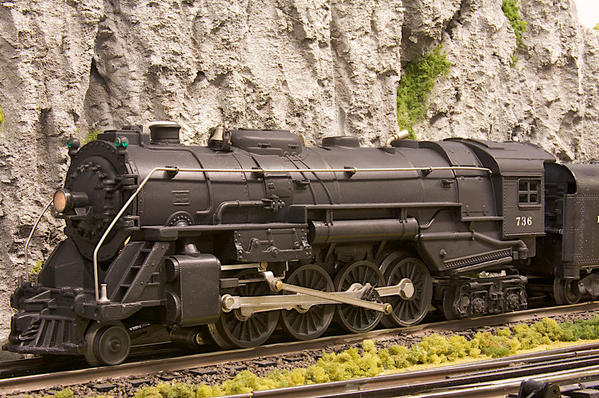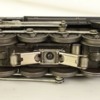The other postwar steamer with a worm drive motor is the 746 N&W J. Per Greenbergs Repair and Operating Manual, "The motor and reversing unit of this locomotive are identical to those used in No. 736. The frame and drive gear are very similar to 736 and most of the parts are interchangeable." It uses the 2046 front truck.
In Roger Carp and Bob Kellers "100 Years of Toy Trains" (Kalmbach), they relate how the 736 Berk helped create the 746 J. "...O gauge enthusiast...John Van Dyck...starting with a Lionel 2-8-4 Berkshire...refashioned it in 1955 to resemble a J by creating a bullet nose for the boiler, adding two wheels to the pilot, and moving the drive rod to the second wheel." It spurred Lionel to develop the J for sale in 1957.
30 years later in 1987 Lionel introduced the Rock Island 4-8-4 Northern, a new boiler on the "tried and true chassis...of the...J..." (Greenbergs Lionel Trains 1987-1995 by Michael Solly) Two similar Northerns followed with the third (Northern Pacific) being a smooth runner with a well made Berk style motor. The first two had almost universally poor running Berk motors. The warning is not to buy one of those unless you test run it first.
Michael Solly also says the 1992 Mikado (Southern) uses a "...prototypically correct body, but still riding on the sturdy Berkshire frame." The later NYC and Denver and Rio Grande Mikados I suppose are also on the Berk chassis. I have the NYC version and someday I will check to see if it is a Berk chassis. Interestingly, these locos have can motors rather than the open frame AC motors of the Berkshire. The new Lion Chief Berk will use a can motor. Once it is delivered we will need to see it the motor mounting is the same as that used in the Mikado. And it will be fun analyzing this new Berk and comparing it to all the previous Berks, 2046s, Js, Northerns, and Mikados.
After reading all these great postings I would not be surprised if we are only "scratching the surface on what there is to know about the Berkshire and its relatives.
Jeff














